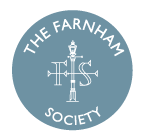The Pollution Summit held on October 25th 2019 and organised by the Farnham Herald and Jeremy Hunt, was seen by some as a political stunt, but in fact was the catalyst for real dialog on this matter between senior Surrey CC and Waverley BC officers and Councillors, perhaps for the first time.
The actions needed to resolve Farnham’s high air pollution problems have been known for many years, indeed Waverley BC’s own Air Quality Management Plan published in 2008 stated that reduction in traffic flow through central Farnham by part pedestrianisation would be the best remedy. However, the fact that Waverley BC has no power or budget to do what it had proposed, taken together with the lack of political will at all levels, has meant that there has been no significant action so far.
The Farnham Society has, in the past, been highly critical of Waverley Borough Council in its incompetence in monitoring air quality but we are glad to say that these issues have now been resolved with rapid publication of valid air quality data available online to everyone.
None of us were to know when the pollution summit took place in October last year, the enormous changes which were to unfold in 2020 with the onslaught of the Corona Virus. Traffic volumes across the country plummeted and so did the amount of air pollution, certainly in terms of Nitrogen Dioxide (NO₂) concentrations. In Farnham, NO₂ concentrations fell by 50% between January 2020 and May during the lockdown period but have of course increased as traffic has returned since but, significantly, not to the pre lockdown levels. This may be due to lower overall traffic volumes, although nationally volumes are almost back to where they were, but more likely to the lane restrictions which have controversially been introduced in Farnham since the summer. This points to the potential value of restricting lanes so as to reduce pollution even when this leads to slower moving traffic.
Another aspect which has been highlighted by the lockdown is the fact that Particulate Matter PM₁₀ concentrations (measured continuously by the automatic monitor at the Royal Deer Junction) show no similar changes to NO₂ concentrations. In fact, there seems to have been little effect on PM ₁₀ concentrations, so it is clear that traffic volumes in Farnham are not the critical factor.
Looking forward, it is obvious that Farnham will not breach any government pollution guidelines this year as these are mostly based on annual mean numbers which in Farnham will all be well below the Air Quality Standards regulations. Beyond that who knows? Given that the number of diesel cars (the worst polluters) being sold has fallen so dramatically from 50% of all cars in 2016 to only 15% this year and that electric and hybrid cars are now selling in similar numbers to diesel, the effect on NO₂ levels must surely come soon.
In any event, the changes to traffic flows as a result of the proposed wide-ranging Farnham Infrastructure Programme, will have a major beneficial effect not only on pollution levels but on the entire environment of the town. There will of course also be problems which result from these changes, one of the important ones being the effect on the Upper Hale Road congestion. However overall, we support many of the proposals which have been tabled but we do worry about the availability of funds to carry the ambitious programme to completion. The Project Board seems to be working well and is reaching out to all stakeholders in and around the town including business and retail which will be much affected by the changes.
For the first time that many of us can remember, there does seem to be a concerted effort by all tiers of local government to work together and to engage with us all in finding a good solution. Political attitudes across the country have changed on environmental and healthy living issues and this must surely be welcome.
John Slater
Chair of the Air Quality Committee


